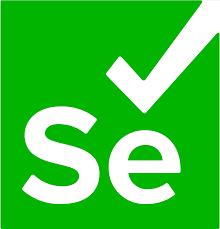Introduction to Selenium Course.
 Atonal Wilson
Atonal Wilson
Selenium is one of the most well-liked free and open-source Web UI (User Interface) automation testing frameworks. It was initially developed by Jason Huggins in 2004 as a tool for internal usage at Thought Works. Selenium offers automation for a variety of computer languages, web browsers, and operating systems. All Selenium subjects, including Selenium WebDriver Features, Selenium WebDriver vs. RC, Selenium vs. QTP, Selenium Tool Suits, Selenium IDE, Locating Strategies for Selenium IDE, and WebDriver Installation, are covered in the Selenium Certification Course.
On operating systems including Windows, Linux, Solaris, and Macintosh, Selenium can be quickly and easily installed. It also supports the Android, iOS, and Windows Mobile mobile operating systems.
Selenium uses drivers created for each programming language to support a wide range of languages. Among other languages, Selenium supports C#, Java, Perl, PHP, Python, and Ruby. Currently, Java and C# are used most frequently with the Selenium Web driver. A Selenium test script can be written in any of the supported programming languages and then executed directly in the majority of modern web browsers. Internet Explorer, Mozilla Firefox, Google Chrome, and Safari are all supported browsers by Selenium.
The narrative opens in 2004 when Jason Huggins was constructing the Core mode as "JavaScriptTestRunner" at ThoughtWorks in Chicago for the testing of an internal Time and Expenses application (Python, Plone). Given the Agile leanings of this company, automatic testing of all applications is a fundamental aspect of ThoughtWork's methodology. Jie Tina Wang and Paul Gross are there to support him. This was their day job, for them.
Jason started showing his coworkers the test tool. Its quick and clear visual feedback as well as its potential to develop into a reusable testing framework for other web apps thrilled a lot of people.
As soon as a fellow ThoughtWorker, Paul Hammant saw the demo in 2004, he began talking about opening up Selenium's source code and developing a "driven" mode that would allow users to use Selenium over the internet from their preferred language, circumventing the "same origin policy." Aslak Hellesoy and Mike Melia, two other (then) coworkers, experimented with several concepts for the "server" component, including page rewriting to circumvent the same origin policy. Aslak and Obie Fernandez converted the client driver from Java to Ruby after Paul had originally written the server component in Java, laying the groundwork for future drivers in yet additional languages.
14 Features of Selenium.
Selenium is a portable and free web testing framework.
Without having to learn a test scripting language, Selenium IDE offers a playback and record tool for creating tests.
It is regarded as the best cloud-based testing platform since it enables testers to log their actions and export them as reusable scripts with an intuitive user interface.
C#, Java, Python, PHP, Ruby, Perl, and JavaScript are examples of programming languages.
Operating systems: Mac, Linux, Windows, Android, and iOS.
Browsers: Apple's Safari, Google Chrome, Mozilla Firefox, Internet Explorer, and Edge, among others.
Furthermore, it provides parallel test execution, which decreases test times and increases test efficacy.
For source code compilation, Selenium can be coupled with frameworks like Ant and Maven.
For application testing and producing results, Selenium can also be linked with testing frameworks like TestNG.
Comparatively speaking, Selenium uses lower resources than other automation test technologies.
One of the most significant changes to Selenium has been the inclusion of the WebDriver API.
Test scripts interact directly with the browser thanks to the Selenium web driver, which doesn't need to be installed on the server.
Selenium instructions are divided into various classes, which makes them simpler to comprehend and use.
Selenium 2.0 is the combination of Selenium Remote Control (RC) with the WebDriver API. Ajax and dynamic web pages were supported in the development of this version.
Subscribe to my newsletter
Read articles from Atonal Wilson directly inside your inbox. Subscribe to the newsletter, and don't miss out.
Written by

Atonal Wilson
Atonal Wilson
Software Developer with 5+ years of experience in designing and developing user interfaces, testing, debugging, and training staff within eCommerce technologies. Proven ability in optimizing web functionalities that improve data retrieval and workflow efficiencies.